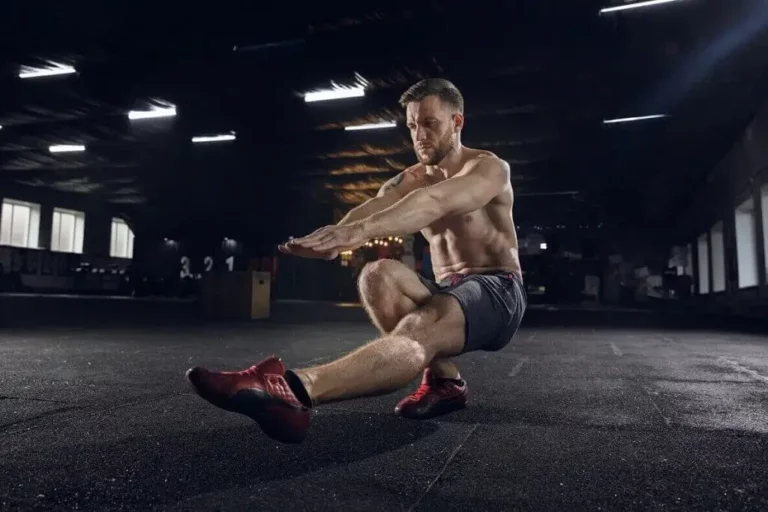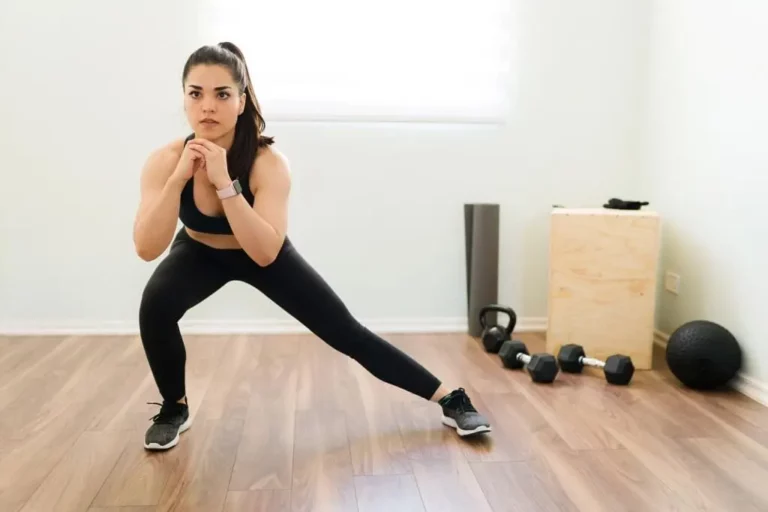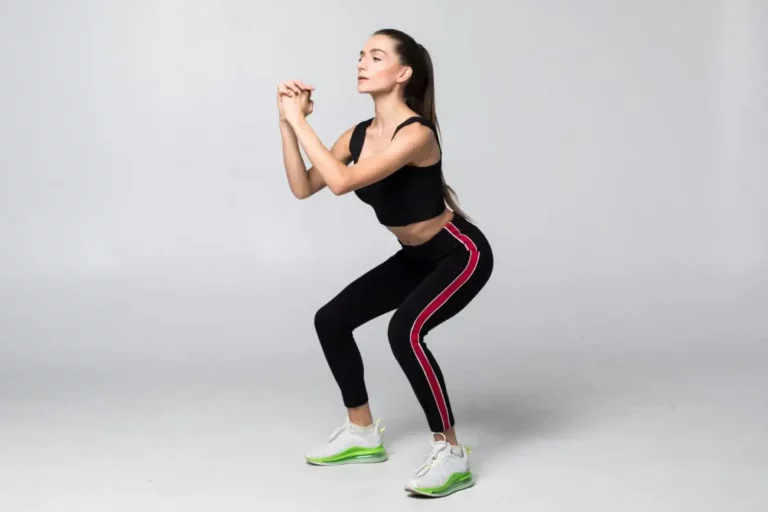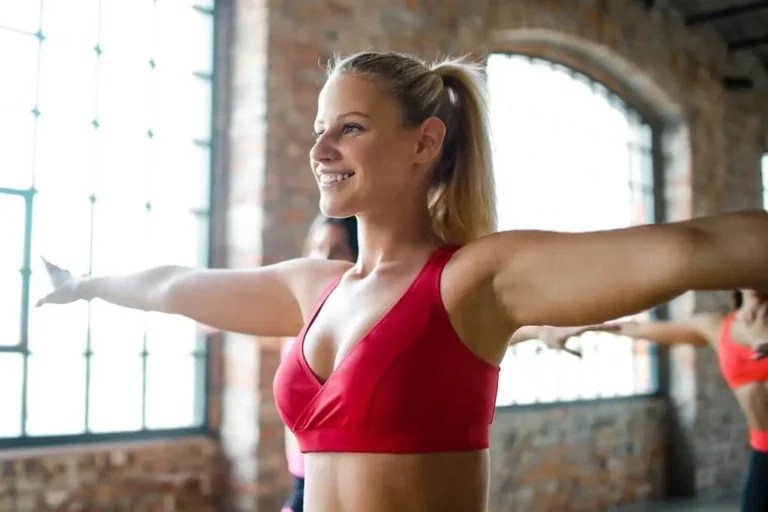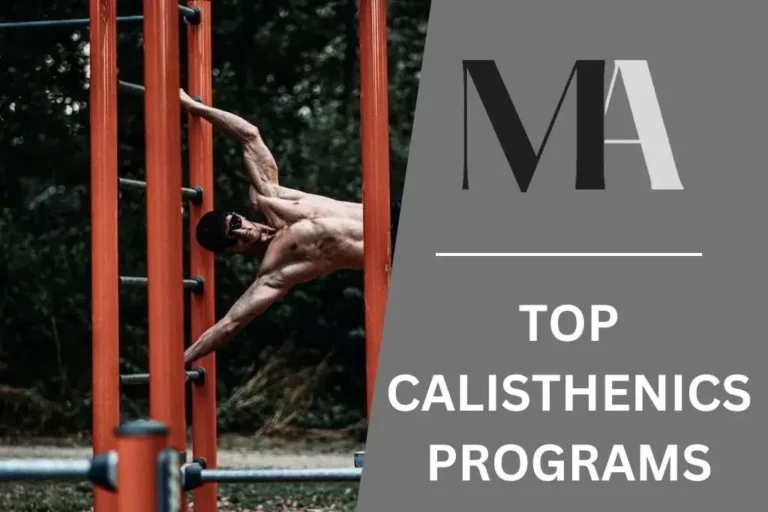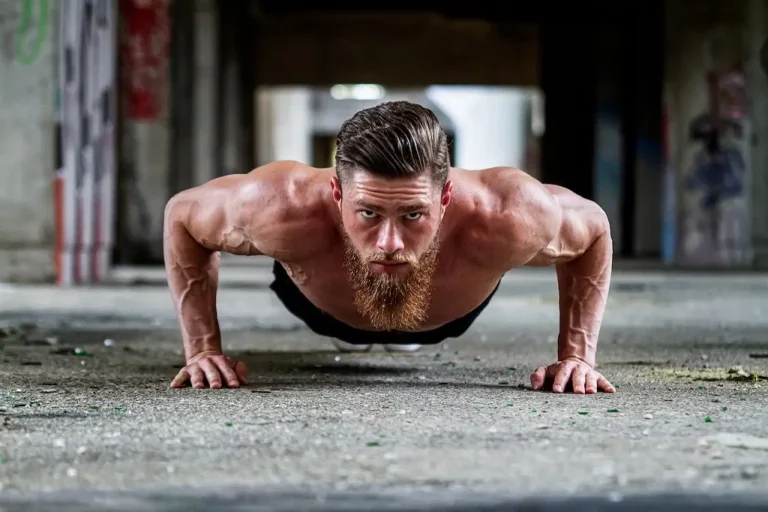Assisted Pull Up For An Impressive V-Taper Look
Band assisted pull up is a great skill for building your upper back. It’s an easier version of a standard pull up.
The band will help reduce the load on your muscles. It will help you feel lighter. So, you will be able to do more reps. It’s a great prep exercise for a regular pull up.
But, it doesn’t need to be used only as a pull up prep. It can be used as a regression move when you have already mastered pull ups.
It will help you do more reps in one training session. So, your muscles will be stimulated more. This will make your muscles grow faster. With well developed lats you will have an impressive V-Taper look.
Since you will basically do the same move as in a standard pull up, this skill will help you master the intricacies of the pull up move.
It will also improve your shoulder flexibility.
Band assisted pull up benefits
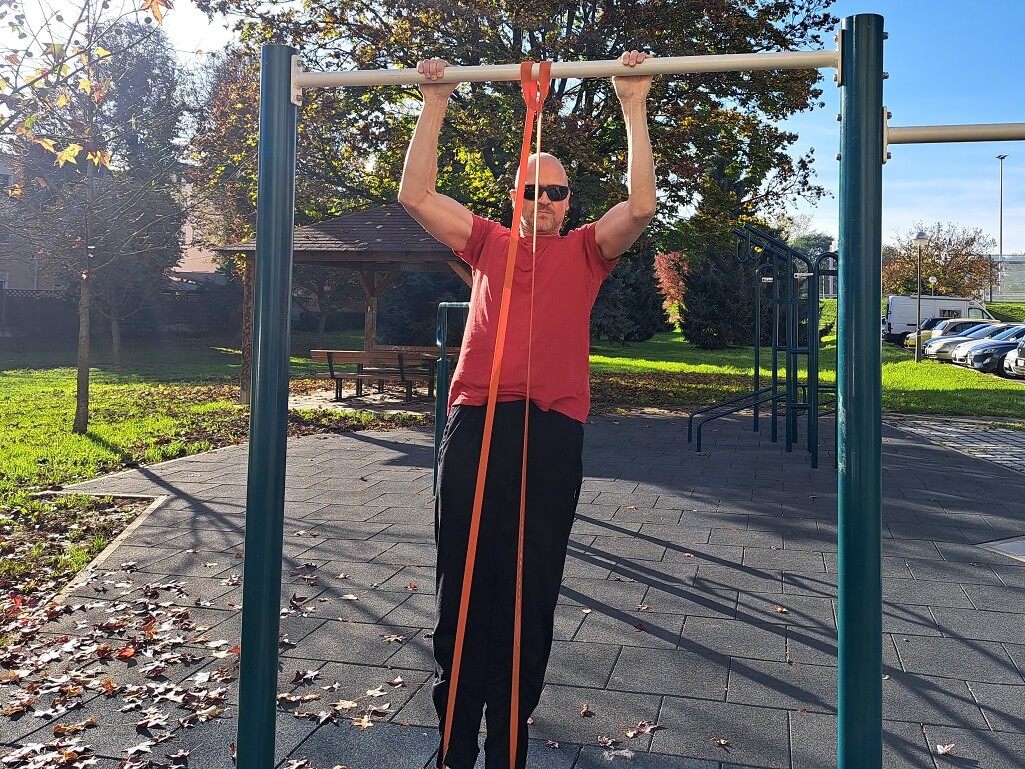
The main benefit of the band assisted pull ups is developing your upper back muscles. It will add size to your lats and build a desired V-Taper.
This will also help you improve your shoulder extension. So, when you are going to work on a handstand you will be able to position yourself correctly.
Band assisted pull up will help you build several muscle groups. Since you are doing almost the same move, it will help you master a perfect pull up form. So, when your strength catches up, you will be able to do it smoothly.
Equipment
To be able to do this move you will need some equipment. You should have access to a pull up bar. You will also need a resistance band.
Equipment:
Band assisted pull up muscles worked
Band assisted pull ups will primarily help you build your latissimus dorsi, trapezius, and rhomboid muscles.
But, to be able to do it other muscles will have to be involved too. So, you will also feel teres major, rear deltoids, infraspinatus, biceps, forearms, and abs work when you do it.
How to do a band assisted pull up
Positioning:
Throw one side of a resistance band over the bar. Pull this end through the band loop. A band should be securely positioned in the middle of a pull up bar.
Pull a band down with both your hands. Place one of your legs inside the band loop.
Grab a bar with your hands facing away from you. Your hands should be placed a bit wider than shoulder width.
If you want, you can place another leg inside the band loop. This is optional. But it’s also how I prefer to position my legs.
Point your toes towards the floor while hanging freely from the bar. If you have access to a high enough bar, you should be hanging without your toes touching the ground.
Upward movement:
To start moving up, pull your entire body weight up towards the bar. To lift up, bend your arms at your elbows.
Keep on pulling, until your chin reaches over the bar. Keep your head straight during the move.
Downward movement:
To move down, slowly lower your body. You will go down by extending your arms at your elbows. Extend your arms until they are completely straight and you are back in a starting position again.
Repeat up and down movements for reps.
Common mistakes
Mistake 1:
One of the common mistakes is not keeping your abs under tension and letting your body swing around without control.
To correct this mistake, try to keep your body tense during the move. Your abs should be contracted and your toes pointed down.
The position should be similar to a hollow hold. If you have problems with this, you should practice hollow holds.
Mistake 2:
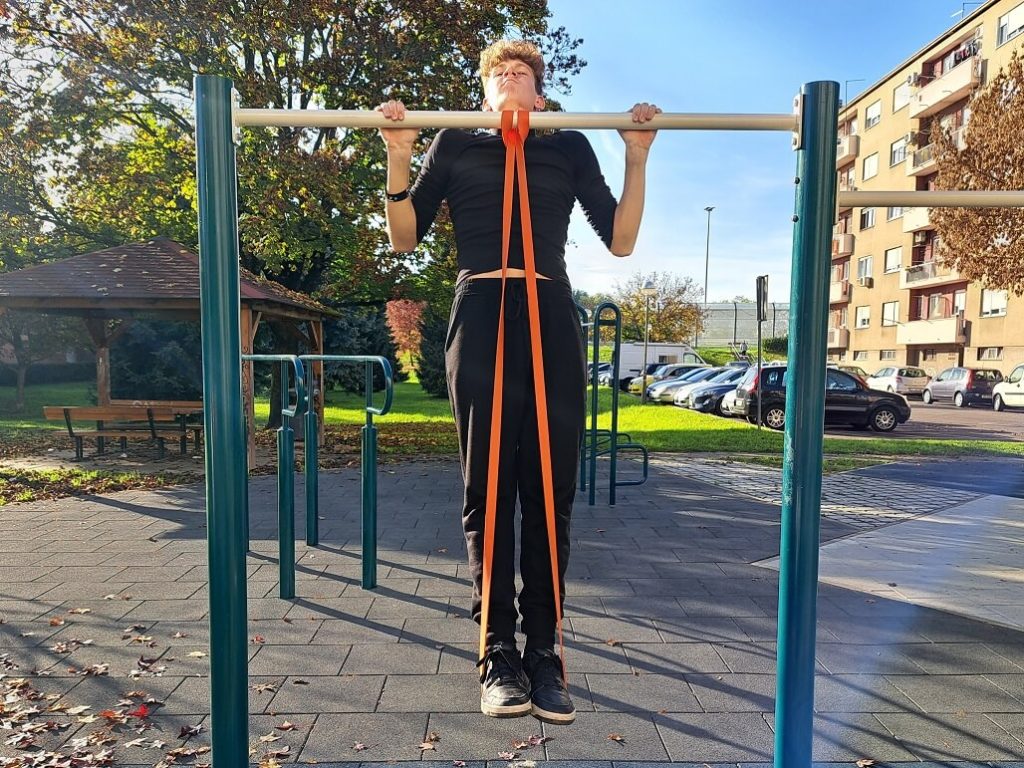
Another common mistake is extending your neck up so you can get it over the bar. This will limit the range of motion you are doing.
To correct this mistake, try to keep your head straight during the move. Keeping the focus on one distant point in front of you might help you overcome this problem.
Mistake 3:
One more mistake that may occur is rounding your back and not pulling your shoulders down at the highest point of the move. Sadly, this happens because you still lack strength.
Correcting this mistake will be more challenging. Improving strength will take time.
To correct it, return to easier exercises in progression. Use inverted rows, dead hang, pull up negatives, and scapular pull ups in your workouts. You can try band assisted pull ups after two or more weeks to check if you can pull it out with the better form.
Progression
If you still have problems doing assisted chin ups, or you can’t do more than one or two reps, you can try easier exercises. There are several options you may want to incorporate into your training:
- Low bar pull up negatives
- Low bar pull up (inverted row or Australian pull up)
- Dead hang
- Pull up negatives
When this move is too easy for you, you can try some harder variants. Especially if you are able to do 3 sets with 15 or more reps per set. That’s when you can be sure, this exercise is too easy for you. Here are some options to explore:
- Pull ups
- Low bar chest to bar pull up jumps
- Chest to bar pull up negatives
- Band chest to bar pull ups
How to speed up your progress
If you are doing band assisted pull ups as the only pull up prep exercise, you might be disappointed.
The band will provide the most resistance at the lowest portion of the move. As you lift your weight up, the resistance band will shrink and give less resistance. So, at the top of the move, your muscles will work hardest. This might slow up your progress.
Luckily, you can combine assisted pull ups with other exercises. The best one is the pull up negative. It will help you increase your strength in the lowest portion of the move.
Inverted rows are another great skill you should use in your workouts. This exercise will help you improve the strength of your traps and rhomboids. If those muscles are preventing you from progressing, inverted rows might just be the solution you were looking for.
Another great skill that will help you improve your strength for initiating a pull up move is a scapular pull up. This skill will help you build the strength needed at the lower portion of the pull up exercise. Scap pull up is the initiating motion you perform in a pull up, so you have to be able to do it.
The last exercise that may help you progress faster is a dead hang. Just hanging from the bar will help you improve your grip strength. When I started, my grip strength was a problem for me. I was not able to hang freely from a high bar. I started by grabbing a low bar and hanging in an inverted row position. In a few days, I was able to do several inverted rows.
Key takeaways
Band assisted pull up will help you develop your upper back and prepare you for a full pull up. It will also improve your shoulder extension.
If this move is too hard, you can try easier exercises from a muscle up progression. If it’s getting too easy, you can go with harder versions found in this progression.

